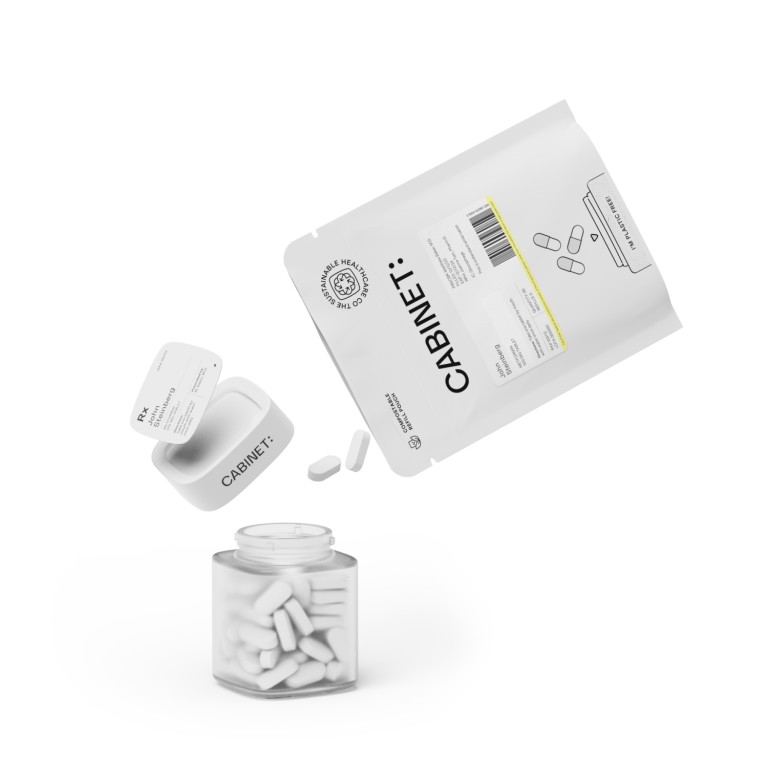Atorvastatin is a commonly prescribed medication used to manage high cholesterol levels. Refilling your Atorvastatin prescription in a timely manner is crucial for maintaining the effectiveness of the medication and ensuring optimal health outcomes. In this article, we will explore the importance of regular refills, how to refill your Atorvastatin prescription, dealing with insurance for prescription refills, and what to do if you miss a refill.
Understanding Atorvastatin and Its Uses
Atorvastatin belongs to a class of drugs known as statins. It works by reducing the production of cholesterol in the liver and lowering the levels of "bad" cholesterol (LDL) in the blood. Atorvastatin is typically prescribed for individuals with high cholesterol levels, as high cholesterol increases the risk of cardiovascular diseases such as heart attacks and strokes.
Why is Atorvastatin Prescribed?
Atorvastatin is mainly prescribed to individuals who have been diagnosed with high cholesterol or have an increased risk of cardiovascular diseases. It helps to lower LDL cholesterol levels and triglycerides while increasing the levels of "good" cholesterol (HDL) in the blood. By doing so, it reduces the risk of plaque buildup in the arteries, which can lead to heart disease and other cardiovascular conditions.
When it comes to managing high cholesterol, lifestyle changes such as adopting a healthy diet and engaging in regular physical activity are often recommended. However, for some individuals, these measures may not be sufficient to lower cholesterol levels to a healthy range. In such cases, medications like atorvastatin can be prescribed to further aid in cholesterol management.
Atorvastatin works by inhibiting an enzyme called HMG-CoA reductase, which plays a crucial role in cholesterol production in the liver. By blocking this enzyme, atorvastatin effectively reduces the amount of cholesterol that is synthesized in the body. This, in turn, leads to a decrease in LDL cholesterol levels, as well as triglyceride levels.
Furthermore, atorvastatin has been shown to increase the levels of HDL cholesterol, often referred to as "good" cholesterol. HDL cholesterol helps to remove LDL cholesterol from the bloodstream and transport it back to the liver for processing and excretion. By increasing HDL cholesterol levels, atorvastatin promotes the removal of excess LDL cholesterol, further reducing the risk of plaque formation in the arteries.
It is important to note that atorvastatin is not a cure for high cholesterol or cardiovascular diseases. Rather, it is a medication that helps to manage cholesterol levels and reduce the risk of associated complications. Therefore, it is typically prescribed as part of a comprehensive treatment plan that includes lifestyle modifications and regular monitoring of cholesterol levels.
When starting atorvastatin, it is essential to follow the prescribed dosage and take the medication as directed by a healthcare professional. It is also important to inform the healthcare provider about any other medications or supplements being taken, as certain substances may interact with atorvastatin and affect its effectiveness or increase the risk of side effects.
Common side effects of atorvastatin may include muscle pain, weakness, and gastrointestinal symptoms such as nausea and diarrhea. These side effects are usually mild and temporary, but if they persist or worsen, it is important to consult a healthcare professional.
In conclusion, atorvastatin is a medication commonly prescribed for individuals with high cholesterol levels or an increased risk of cardiovascular diseases. By reducing LDL cholesterol levels, increasing HDL cholesterol levels, and lowering triglyceride levels, atorvastatin helps to manage cholesterol and reduce the risk of plaque buildup in the arteries. However, it is important to remember that atorvastatin is not a standalone solution and should be used in conjunction with lifestyle modifications and regular monitoring of cholesterol levels.
The Importance of Regular Refills
Maintaining Your Medication Schedule
Regular refills are essential for ensuring that you consistently take your Atorvastatin medication as prescribed. By refilling your prescription on time, you can avoid any interruptions in your treatment and maintain a consistent medication schedule. This helps to ensure that you are receiving the maximum benefit from the medication.
Risks of Skipping Doses
Skipping doses of Atorvastatin can hinder its effectiveness in managing your cholesterol levels. The continuous use of Atorvastatin is important for maintaining stable cholesterol levels and reducing the risk of cardiovascular diseases. Skipping doses may lead to an increase in LDL cholesterol levels and decrease the overall effectiveness of the medication.
How to Refill Your Atorvastatin Prescription
Refilling Through Your Pharmacy
When your Atorvastatin prescription is running low, the most common way to refill it is by visiting your local pharmacy. Simply bring your prescription bottle and let the pharmacist know that you need a refill. They will guide you through the process and provide you with the necessary medication.
Online Prescription Refills
Alternatively, many pharmacies offer online prescription refills. This convenient option allows you to request a refill from the comfort of your own home. Simply log in to your pharmacy's website or app, provide the necessary information, and your prescription will be ready for pickup or delivered to your doorstep.
Dealing with Insurance for Prescription Refills
Understanding Your Coverage
Before refilling your Atorvastatin prescription, it's important to understand your insurance coverage. Different insurance plans may have different policies regarding prescription medications. Take the time to review your plan's formulary to ensure that Atorvastatin is covered. If you have any questions or concerns, don't hesitate to reach out to your insurance provider for clarification.
Navigating Insurance Issues
Despite having coverage, you may encounter challenges when refilling your Atorvastatin prescription. Issues such as prior authorizations, formulary restrictions, and quantity limitations can cause delays or denials in obtaining your medication. If you face any difficulties, contact your healthcare provider and insurance company to help resolve the issue and ensure you have access to the medication you need.
What to Do If You Miss a Refill
Immediate Steps to Take
If you happen to miss refilling your Atorvastatin prescription, it’s important not to panic. Contact your healthcare provider or pharmacy as soon as possible to explain the situation. They may be able to assist you in getting a new prescription or offer alternative solutions to prevent any interruption in your treatment.
Preventing Future Missed Refills
To avoid missed refills in the future, consider setting reminders on your phone or utilizing pharmacy services that offer automatic refills. These tools can help ensure that you never run out of your Atorvastatin medication and maintain consistent cholesterol management.
In conclusion, refilling your Atorvastatin prescription is a critical aspect of managing your cholesterol levels and maintaining your overall health. By understanding Atorvastatin and why it is prescribed, recognizing the importance of regular refills, knowing how to refill your prescription and navigate insurance issues, and taking the necessary steps if you miss a refill, you can ensure that you are effectively managing your cholesterol and reducing the risk of cardiovascular diseases.









